Posts (page 124)
-
 8 min readTo create a custom 404 error page in Next.js, you can follow these steps:In your Next.js project's root directory, navigate to the pages folder.Create a new file named 404.js. This file will represent your custom 404 error page.Inside the 404.js file, you can write your desired content for the error page using JSX or plain HTML. This can include a message, an apology, a search bar, or any other relevant information.
8 min readTo create a custom 404 error page in Next.js, you can follow these steps:In your Next.js project's root directory, navigate to the pages folder.Create a new file named 404.js. This file will represent your custom 404 error page.Inside the 404.js file, you can write your desired content for the error page using JSX or plain HTML. This can include a message, an apology, a search bar, or any other relevant information.
-
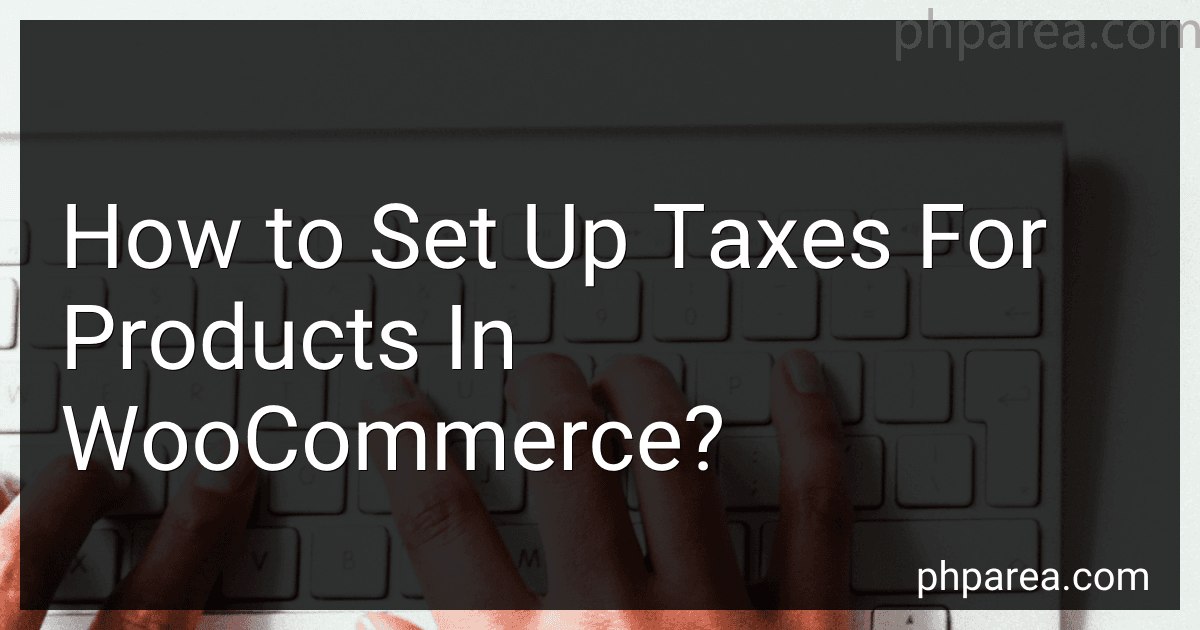 9 min readTo set up taxes for products in WooCommerce, you can follow these steps:Enable tax calculations: In your WordPress admin dashboard, go to WooCommerce > Settings > General. Check the "Enable taxes" option and save the changes. Set your tax options: Go to WooCommerce > Settings > Tax. Here, you can configure various tax options such as whether prices include tax, display tax totals, and calculate tax based on the customer's shipping address or billing address.
9 min readTo set up taxes for products in WooCommerce, you can follow these steps:Enable tax calculations: In your WordPress admin dashboard, go to WooCommerce > Settings > General. Check the "Enable taxes" option and save the changes. Set your tax options: Go to WooCommerce > Settings > Tax. Here, you can configure various tax options such as whether prices include tax, display tax totals, and calculate tax based on the customer's shipping address or billing address.
-
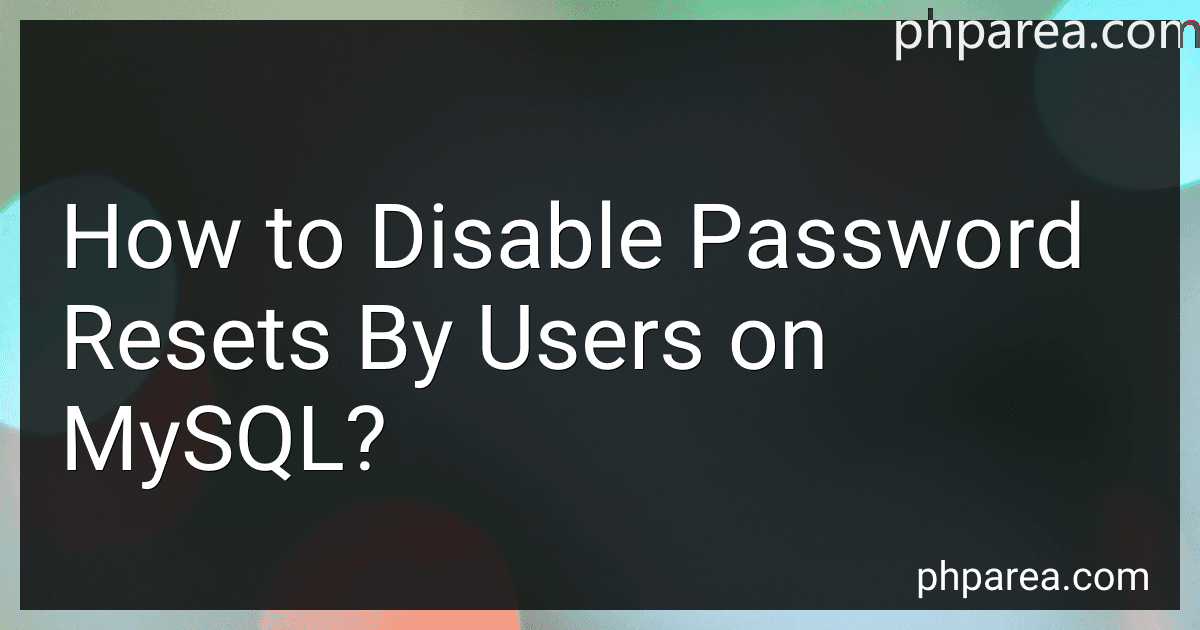 6 min readTo disable password resets by users on MySQL, you can follow these steps:Connect to the MySQL server as a user with administrative privileges. You can use the command line tool or a graphical client like phpMyAdmin.Run the following command to select the MySQL user account that you want to disable password resets for: SELECT User, Host FROM mysql.user; Identify the user account for which you want to disable password resets, and make a note of its name and host.
6 min readTo disable password resets by users on MySQL, you can follow these steps:Connect to the MySQL server as a user with administrative privileges. You can use the command line tool or a graphical client like phpMyAdmin.Run the following command to select the MySQL user account that you want to disable password resets for: SELECT User, Host FROM mysql.user; Identify the user account for which you want to disable password resets, and make a note of its name and host.
-
 8 min readTracking and fulfilling orders in WooCommerce is an essential part of managing an online business. Here's a general guide on how to track and fulfill orders:Order Tracking: Once a customer places an order, you can track its progress within WooCommerce. Go to the WooCommerce dashboard and navigate to the "Orders" section. Look for the specific order you want to track and click on it.
8 min readTracking and fulfilling orders in WooCommerce is an essential part of managing an online business. Here's a general guide on how to track and fulfill orders:Order Tracking: Once a customer places an order, you can track its progress within WooCommerce. Go to the WooCommerce dashboard and navigate to the "Orders" section. Look for the specific order you want to track and click on it.
-
 5 min readTo connect to Oracle with the Sys and SysDBA privileges correctly, you can follow these steps:Open a command prompt or terminal window on your computer. Enter the following command to connect using the "sys" user: sqlplus sys/ as sysdba Replace with the actual password for the "sys" user. Press Enter. If the connection is successful, you will see the SQL*Plus prompt. To execute SQL commands as a SYSDBA privileged user, you need to set the appropriate role.
5 min readTo connect to Oracle with the Sys and SysDBA privileges correctly, you can follow these steps:Open a command prompt or terminal window on your computer. Enter the following command to connect using the "sys" user: sqlplus sys/ as sysdba Replace with the actual password for the "sys" user. Press Enter. If the connection is successful, you will see the SQL*Plus prompt. To execute SQL commands as a SYSDBA privileged user, you need to set the appropriate role.
-
 7 min readTo add custom metadata to pages in Next.js, you can use the Next.js Head component. The Head component allows you to modify the head tag of your HTML document, which includes adding custom metadata such as title, description, or site-wide CSS styles.
7 min readTo add custom metadata to pages in Next.js, you can use the Next.js Head component. The Head component allows you to modify the head tag of your HTML document, which includes adding custom metadata such as title, description, or site-wide CSS styles.
-
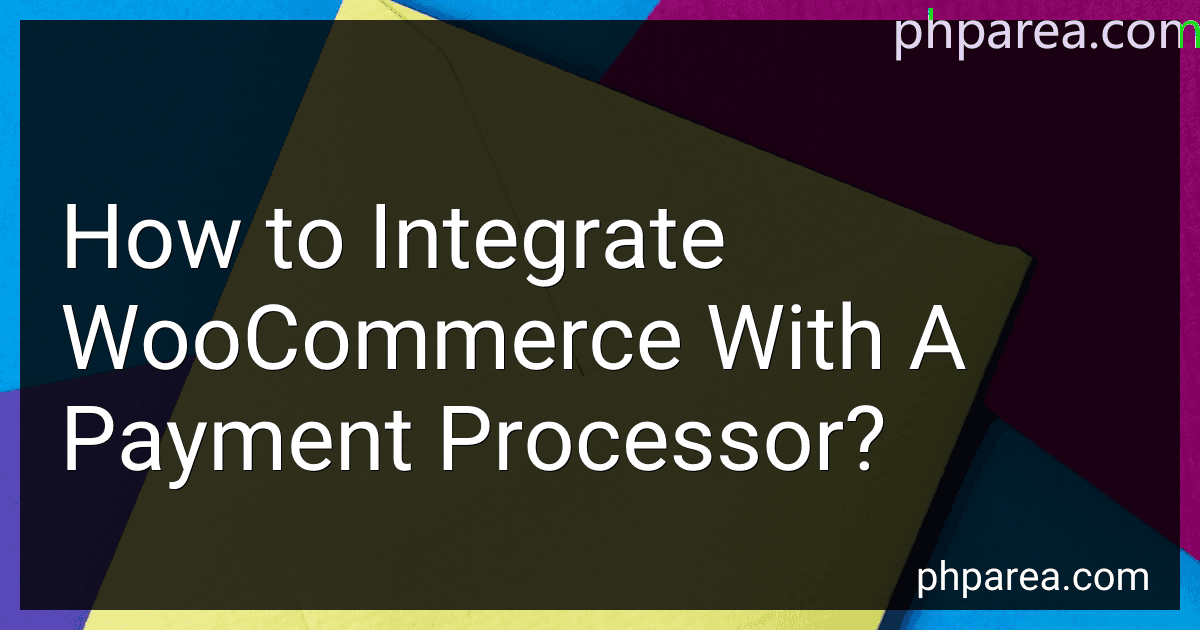 14 min readIntegrating WooCommerce with a payment processor allows you to accept online payments on your e-commerce website. Here's a general procedure to integrate WooCommerce with a payment processor:Choose a payment processor: First, research and choose a payment processor that suits your business needs. Popular options include PayPal, Stripe, Authorize.net, etc. Install and activate the payment processor plugin: Go to the WooCommerce settings in your WordPress dashboard.
14 min readIntegrating WooCommerce with a payment processor allows you to accept online payments on your e-commerce website. Here's a general procedure to integrate WooCommerce with a payment processor:Choose a payment processor: First, research and choose a payment processor that suits your business needs. Popular options include PayPal, Stripe, Authorize.net, etc. Install and activate the payment processor plugin: Go to the WooCommerce settings in your WordPress dashboard.
-
 5 min readTo split a varchar in Oracle, you can use a combination of string functions such as SUBSTR, INSTR, and LENGTH. These functions allow you to extract specific parts of a string based on certain criteria.First, you can use the INSTR function to find the position of a delimiter within the varchar.
5 min readTo split a varchar in Oracle, you can use a combination of string functions such as SUBSTR, INSTR, and LENGTH. These functions allow you to extract specific parts of a string based on certain criteria.First, you can use the INSTR function to find the position of a delimiter within the varchar.
-
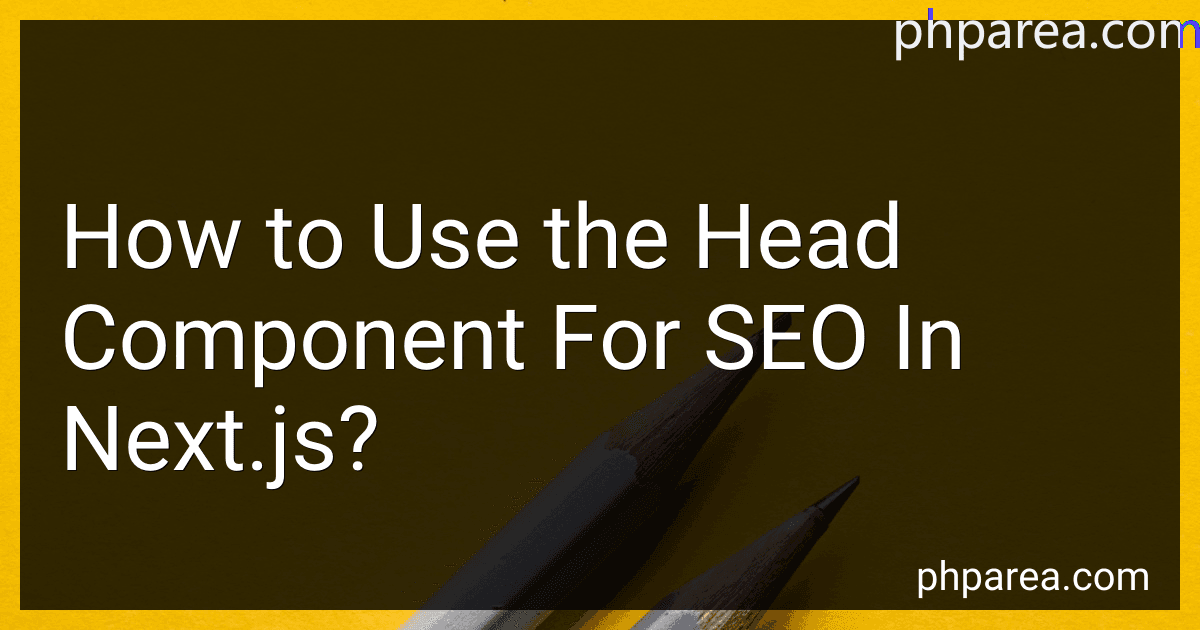 13 min readThe Head component in Next.js allows you to control the document's head, including the title tag and meta tags, for search engine optimization (SEO) purposes. It is essential for improving a website's visibility in search engine results pages.By using the Head component, you can set a unique title for each page of your website. The title should be concise and descriptive, accurately reflecting the content of the particular page.
13 min readThe Head component in Next.js allows you to control the document's head, including the title tag and meta tags, for search engine optimization (SEO) purposes. It is essential for improving a website's visibility in search engine results pages.By using the Head component, you can set a unique title for each page of your website. The title should be concise and descriptive, accurately reflecting the content of the particular page.
-
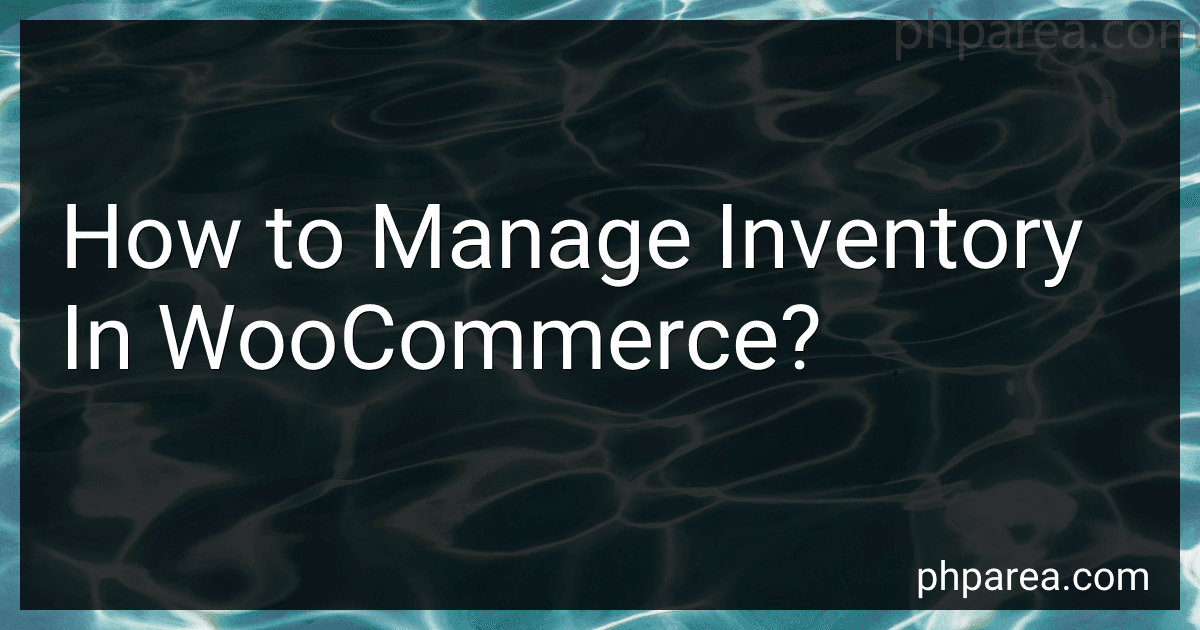 14 min readManaging inventory in WooCommerce is crucial for any ecommerce business. It involves keeping track of available stock, tracking sales and shipments, and ensuring that products are accurately reflected on your website. Here are key aspects to consider when managing inventory in WooCommerce:Product Information: WooCommerce allows you to store detailed information about your products, such as SKU (stock-keeping unit) numbers, descriptions, images, and pricing.
14 min readManaging inventory in WooCommerce is crucial for any ecommerce business. It involves keeping track of available stock, tracking sales and shipments, and ensuring that products are accurately reflected on your website. Here are key aspects to consider when managing inventory in WooCommerce:Product Information: WooCommerce allows you to store detailed information about your products, such as SKU (stock-keeping unit) numbers, descriptions, images, and pricing.
-
 8 min readTo create discounts and coupons in WooCommerce, you can follow these steps:Login to your WordPress admin panel and go to WooCommerce > Coupons.Click on the "Add Coupon" button to create a new coupon.Enter a coupon code - this is the code that customers will enter to apply the discount.Provide a description for the coupon. This is for your own reference to identify the coupon later.Choose the discount type: percentage discount, fixed cart discount, or fixed product discount.
8 min readTo create discounts and coupons in WooCommerce, you can follow these steps:Login to your WordPress admin panel and go to WooCommerce > Coupons.Click on the "Add Coupon" button to create a new coupon.Enter a coupon code - this is the code that customers will enter to apply the discount.Provide a description for the coupon. This is for your own reference to identify the coupon later.Choose the discount type: percentage discount, fixed cart discount, or fixed product discount.
-
 4 min readTo select the maximum value from two columns in Oracle, you can use the GREATEST function. The GREATEST function returns the maximum value among the specified expressions or columns.Syntax: SELECT GREATEST(column1, column2) AS max_value FROM table_name; Example: SELECT GREATEST(salary, bonus) AS max_pay FROM employees; In the above example, the GREATEST function will compare the values of the salary and bonus columns for each row in the employees table and return the maximum value as max_pay.
4 min readTo select the maximum value from two columns in Oracle, you can use the GREATEST function. The GREATEST function returns the maximum value among the specified expressions or columns.Syntax: SELECT GREATEST(column1, column2) AS max_value FROM table_name; Example: SELECT GREATEST(salary, bonus) AS max_pay FROM employees; In the above example, the GREATEST function will compare the values of the salary and bonus columns for each row in the employees table and return the maximum value as max_pay.